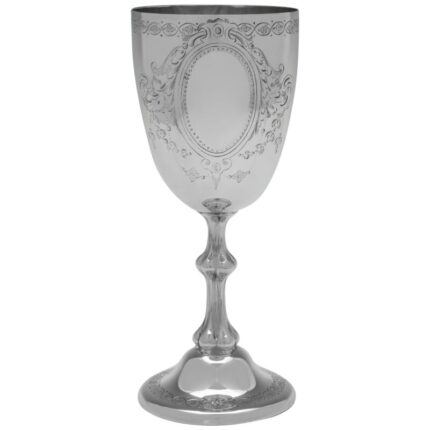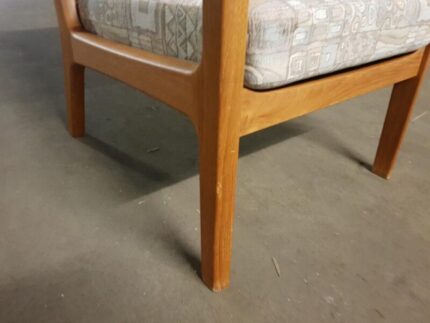4’6″ x 5’10” (5′ X6′)
137cm x 178cm
“This is an extraordinary, rare Mid 1800’s Museum quality Silk Heriz. This piece came from a New Jersey Estate. This piece was originally purchased on 3-29-1918 and the date stamped on the back of the rug. It was an old piece then and It dated back to 1860’s.
It has an incredibly fine weave and striking overall design. Rugs of this caliber and quality are hard to come across and have always been highly desired.”-Antique Rug Collection
Size
4’6″ x 5’10” 137cm x 178cm
Serial ID #
40753k
Design
Rare Pure 100% Silk Heriz
Metric size
137cm x 178cm
Age
Circa 1860, Purchase date is stamped on the back of the rug: P 3-29-18
Category
Antique
Pattern
Geometric Overall
Material
100% Hand knotted Silk
Foundation Material
100% Silk
Color
Beige, Rust, Gray, Navy Blue, Black, Ivory, Gold, Green, light Blue, Brown
Quality
Exceptionally Fine, Intricate Artisan Workmanship
Condition
Superb Condition for a pre-1900 piece, A Few low areas, Amazing Quality & Pile
History of Heriz Carpet
Heriz rugs are Persian rugs from the area of Heriz, East Azerbaijan in northwest Iran, northeast of Tabriz. Such rugs are produced in the village of the same name in the slopes of Mount Sabalan. Heriz carpets are durable and hard-wearing and they can last for generations. 19th century examples of such carpets are often found on sale by major auction houses in United States and Europe. Part of the reason for the toughness of Heriz carpets is that Mount Sabalan sits on a major deposit of copper. Traces of copper in the drinking water of sheep produces high quality wool that is far more resilient than wool from other areas.
Heriz rug weavers often make them in geometric, bold patterns with a large medallion dominating the field. Such designs are traditional and often woven from memory.
Similar rugs from the neighboring towns and villages of the Heriz region are Afshar, Heris, Mehraban, Sarab, Bakhshayesh, and Gorevan. The grades of these rugs are primarily based on village name. Serapis, for example, have been considered the finest grade of Heriz since the beginning of the 20th century.
Heriz rugs are of coarse construction. The rugs range from 30 kpsi on the low end to 100–10 kpsi on the high end. It is rare to see a rug over 100 kpsi that would look like an authentic Heriz unless it is an antique silk Heriz.
History of Serapi
Name
The Serapi rug was known as a Sarab until export of the textile began. A number of reasons are given for the name change including an incorrect translation by American merchants. Another reason commonly given is related to a visit by the Prince of Wales to India in 1876 on the ship the Serapis. Some believe the ship gave its name to both the rug and the region.
Characteristics
Often carrying a central medallion motif, or beautiful overall geometric pattern, the Serapi rug is hand woven and knotted using symmetrical knots pulled right.
Geography
The Serapi rug is manufactured in what was known as the Sarab region of Persia, now located in Azerbaijan and northern Iran. Original Serapi rugs were created in the villages of Serapi, Sarab, Ahar, Heriz and Gorevan.
Production
The Serapi rug can be traced back to the beginning of Persian handmade rug production in 5,500 B.C., but it was not until the mid-19th century that Persian rugs began to be exported around the world. Before these rugs became an export item, they were used only in the villages in which they were produced.
Name
The Serapi rug was known as a Sarab until export of the textile began. A number of reasons are given for the name change including an incorrect translation by American merchants. Another reason commonly given is related to a visit by the Prince of Wales to India in 1876 on the ship the Serapis. Some believe the ship gave its name to both the rug and the region.
Characteristics
Often carrying a central medallion motif, the Serapi rug is hand woven and knotted using symmetrical knots pulled right.
Wool
The wool of the Sarab region, where the Serapi rug is produced, is claimed to be stronger than other wools because sheep in the region drink water containing traces of copper. The Serapi rug is known for its strength and durability.
About Us~
Welcome to Antique Rug Collection. Your #1 Source for handmade Antique Rugs & Tapestries at great prices, curated by leading industry expert.
We are a 6th Generation antique rug shop with 48+ years of experience working with designers, private clients, dealers, and really anyone looking for a unique antique rug at a great price.
We’ve made an imprint selling rugs across the globe in Europe, Asia, and the United States. We’ve been catering to private clients and designers across the world, and now we’re proud to say, we’re completely digital.
Free design consultations upon request- Message us! We will find you the best rug, carefully curated to your space.
Client satisfaction is our number one priority. We want you to love your purchase as well as our service. If you are looking for a specific color, size, or rug type, please feel free to reach out, and we will find you the perfect match.
Love,
The Team at Antique Rug Collection.
-
Dimensions:Width: 53.94 in (137 cm)Length: 70.08 in (178 cm)
-
Materials and Techniques:WoolHand-Knotted
-
Place of Origin:Iran
-
Period:1860-1869
-
Date of Manufacture:1865
-
Condition:Good
-
Seller Location:New York, NY
-
Reference Number:Seller: k35704Seller: LU6964232321692







































Reviews
There are no reviews yet.